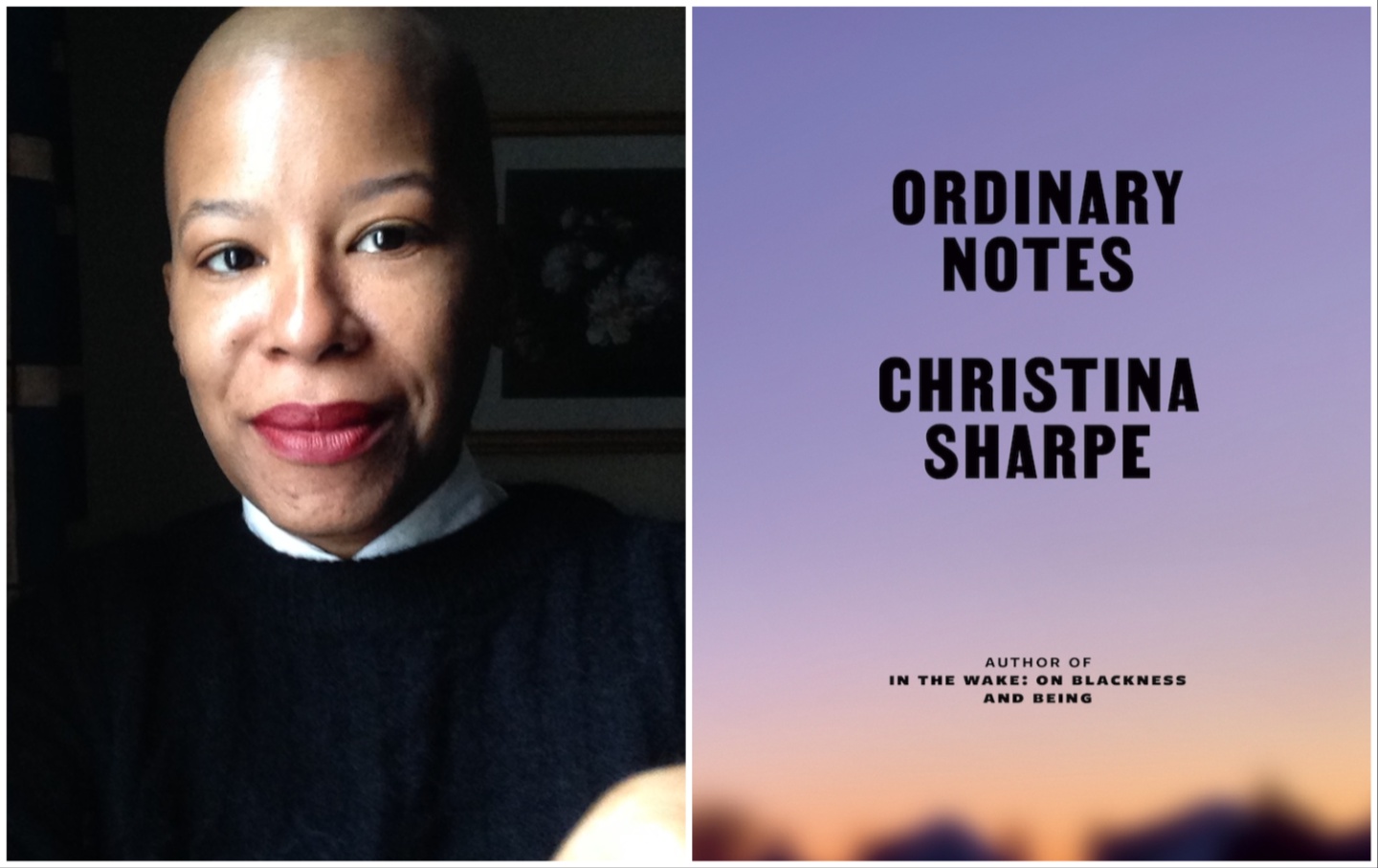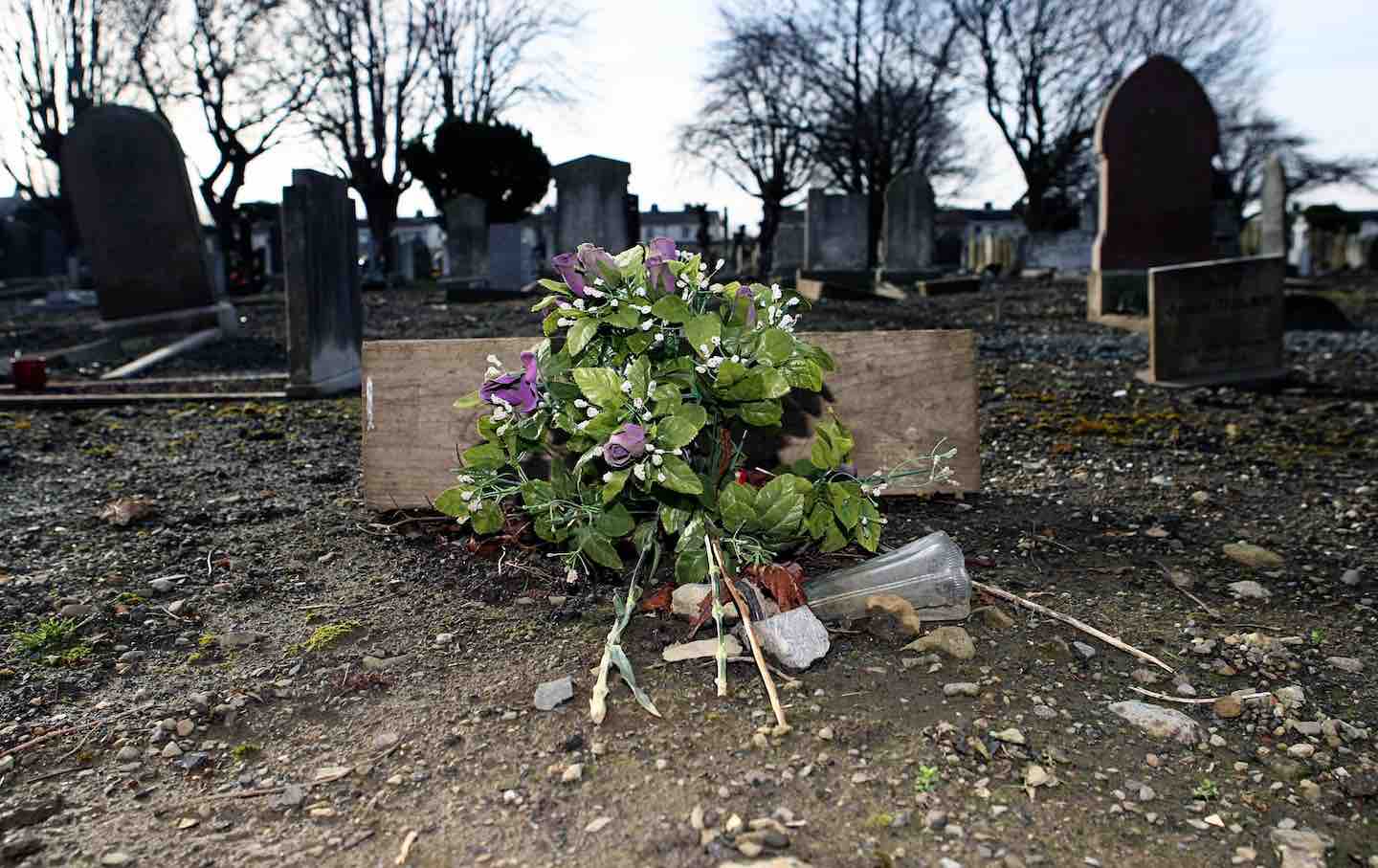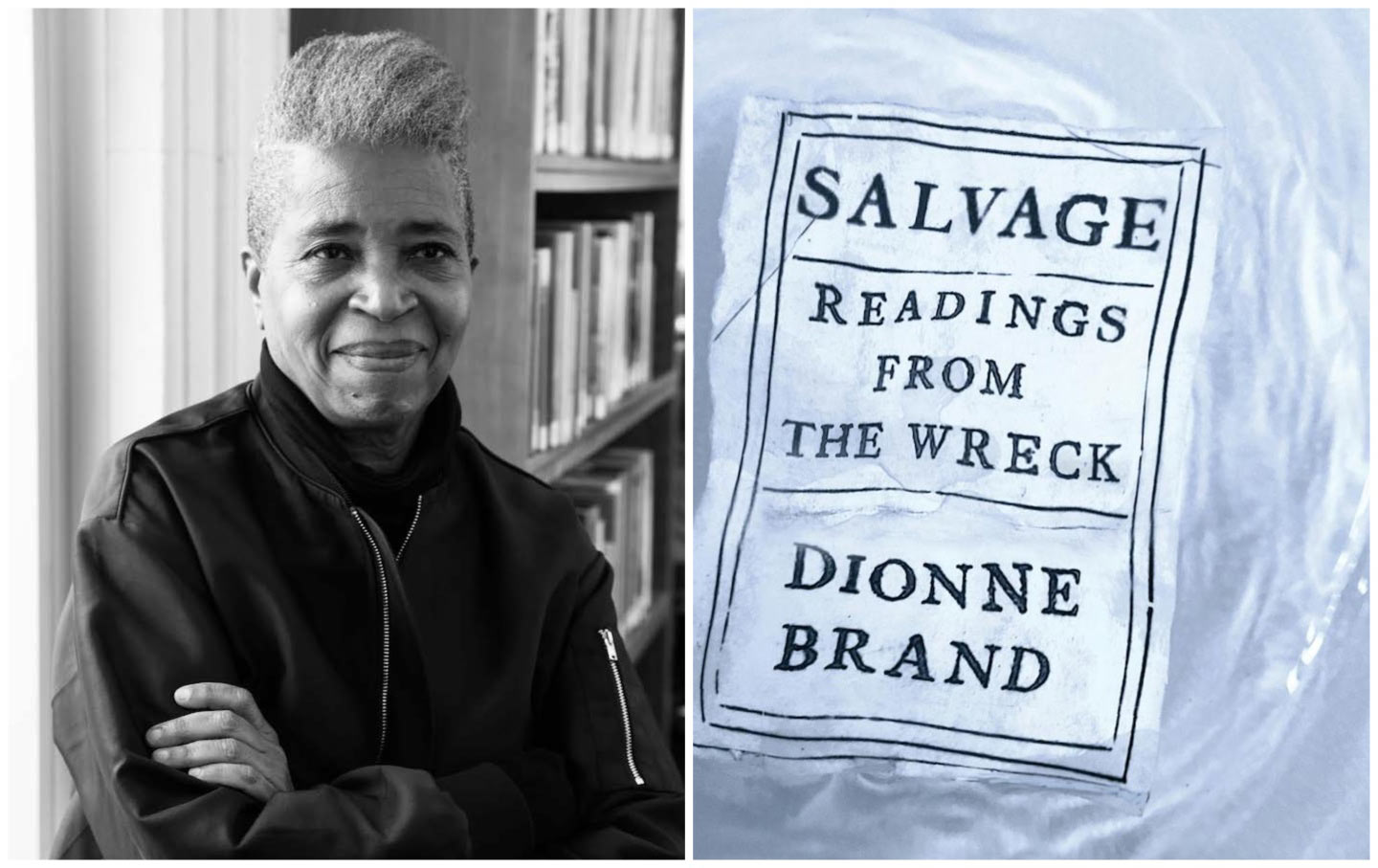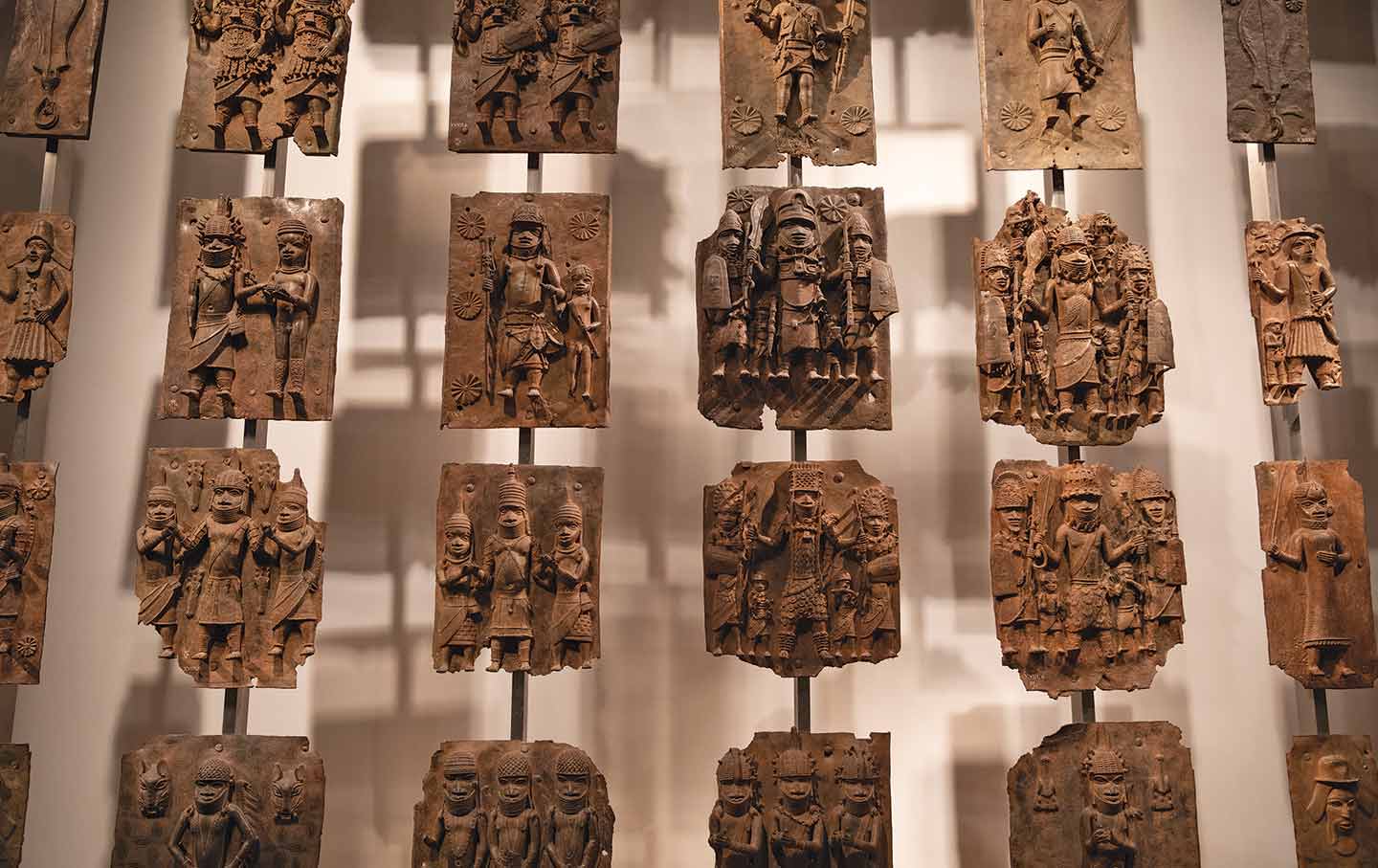The Work of Black Life: A Conversation With Christina Sharpe
In Ordinary Notes, a extraordinary work of memoir, poetry, and criticism, she writes a love letter to Black art.

“The ‘past’ fails to stay in the past,” writes Christina Sharpe in Ordinary Notes. Instead, it hovers continually over the present. Sharpe, a writer and the Canada Research Chair in Black Studies in the Humanities at York University, has written three books about the legacies of chattel slavery. Her first, Monstrous Intimacies: Making Post-Slavery Subjects, examined the ways that Black bodies are made to bear the trace of “unfreedom” via “the sadomasochism of everyday black life,” while her second, In the Wake: On Blackness and Being, was a genre-bending work about the aftermath of the transatlantic slave trade and the oppressive regimes that continue to structure Black life. In the latter, a precursor to Ordinary Notes in both form and theme, Sharpe compared racism to “the engine that drives the ship of the state’s national and imperial projects” and mobilized the many different meanings of “wake”: the mark left by a ship on the surface of an ocean, funeral rites, the line of a gun’s recoil, the hypervigilance that is all but a condition of survival for Black people living in a “total climate of anti-Blackness,” and so on.
Ordinary Notes builds on both of Sharpe’s earlier books and is her most personal project yet. A blend of memoir, prose poetry, critical theory, and philosophy, the book is an extraordinary compendium of 248 notes—some no longer than a sentence—on a variety of things, including passages from favorite novels, family photos, verse, reproductions of paintings by Jacob Lawrence and Leon Golub, newspaper clippings, and letters. (The last note, a kind of skeleton key to the whole project, reads simply: “This is a love letter to my mother.”) I spoke with Sharpe about how she wrote this book, “hysterical whiteness,” compiling notes for a “Dictionary of Untranslatable Blackness,” and more. This conversation has been edited for length and clarity.
—Rhoda Feng
Christine Sharpe: I have several origin stories. One is that I was invited to give a talk in 2019 at Gallery TPW, a small independent gallery in Toronto, and I was trying to figure out what part of what I was working on I was going to talk about. I had been working, and am still working, on a book called Black. Still. Life, which is under contract with Duke University Press (and scheduled to be published in 2025). Then I received the e-mail that became Note 15 [in which a former classmate of Sharpe’s writes to tell her that grade school was a uniquely “unhappy” experience for her and that Sharpe was one of few people in the letter writer’s class “who made it bearable for me.”]. It was a shocking e-mail and spurred the thought that I would write and put together a series of encounters, and that became the basis of the talk at Gallery TPW. So that was one beginning of the thinking that became Ordinary Notes.
Another kind of origin story is that in 2018, Saidiya Hartman and I were at the Underground Museum in LA, and I was going to be interviewing her about Wayward Lives, Beautiful Experiments. We were having lunch and talking about our future and current projects, and I told her about this project I wanted to work on and showed her these photographs of my mother and grandmother that appear in the book, and she said, “I think you should work on that. That’s the more difficult project.” So I chose the more difficult project.
I didn’t do a lot of reorganization—I mostly expanded things and slotted things into place. I started out by thinking about the definitions of the word “note.” I also knew that I wanted to have a section on Camera Lucida; one of the questions that Saidiya asked me was, “What would a Camera Lucida of the Black maternal look like?” I knew that I wanted to have a section that looked at museums and memorials but wanted to disperse some of that throughout the book. And I knew that I wanted to deal with photographs—those photos of my mother and grandmother were central to my imagining of this book—and visual arts. In terms of inclusion and exclusion, I put in all the notes that seemed to fit, and I wrote as many as it seemed like a book required.
RF: The experience of reading your book was a very haptic one for me; I kept reaching for other books that you reference or critique or making notes to borrow them. One note is a list of books that have fed your thinking as a writer and scholar—a golden syllabus. To pick just one of the titles, you mention that Adrienne Kennedy’s People Who Led to My Plays is “one of the books whose form informs this one.” Can you elaborate on the influence of Kennedy’s plays on your work?
CS: I first read People Who Led to My Plays in 1987 because somebody I went to college with, who is now quite a successful playwright and dramaturg, suggested it. It’s a book that grabbed ahold of my imagination for many, many years. I used to teach it, along with Adrienne Kennedy in One Act. I think I saw Now, Voyager because I read this book, and then watched it many times. And there were many other books and films and events mentioned in Kennedy’s book. The book was this story of a life opened up by and to a series of influences, from things on the page to games to people and music, etc. I found that really compelling, and it’s stayed with me all these years. Other books would be Dionne Brand’s A Map to the Door of No Return: Notes to Belonging and, more recently, Brand’s The Blue Clerk: Ars Poetica in 59 Versos and John Keene’s Annotations. In each book, form is central to both the telling and the feeling.
RF: Both Ordinary Notesand In the Wakelink memoir with sharp analyses of topics like the legacy of slavery museums and disasters like the Middle Passage, the Atlantic slave trade, and Jim Crow segregation to the failure of writers like Kazuo Ishiguro to imagine Blackness. What inspired your choice to work in multiple registers and across genres? What does this more essayistic form allow that more conventional forms of academic writing don’t?
CS: In the Wake actually has very little biography. The first 15 pages of the book do contain some biography, and that was the part of the text that I was most unsure about, but also the part of the text that I felt needed to be there so I could position myself in relation to the work. In the book, I quote Hartman quoting Du Bois about the autobiographical example as a means of showing the force of violence on a particular life as that life is connected to many lives. The “autobiographical example,” she says, “is not a personal story that folds onto itself; it’s not about navel gazing, it’s really about trying to look at historical and social process and one’s own formation as a window onto social and historical processes, as an example of them.”
In terms of thinking about the legacy of museums and disasters, I made a deeply conscious decision to think about the ways that particular kinds of structural violence are meted out to people of African descent no matter where we are. I really wanted to think about the registers in which one might and does experience that violence and refuse that violence, the ways in which Black life is interdicted and the ways in which something in excess of what is interdicted might still find a space to be. Formally, of course, Ordinary Notes is different from In the Wake. The white space between notes does a particular kind of work—to allow a pause, a breath, a consideration and then to build in the register of juxtaposition and accumulation and encounter. I wanted to write a work that attended to Black life, to memory, to thinking, to literature, and I wanted the book to do that work formally also.
I think that the audiences for In the Wake and Ordinary Notes may be the same audiences, too. I really wanted In the Wake to speak to an audience that could be an academic audience but that would not be limited to an academic audience. One of the things that has been tremendously surprising and heartening, really lovely, about the reception of In the Wake is that it has reached all kinds of people. The book has traveled into prisons, community organizing groups, and made its way to artists, filmmakers, and high-school debaters. It has been translated (unofficially) into other languages and now officially into Portuguese. I hope that Ordinary Notes speaks to similar groups of readers, thinkers, and makers.
RF: I’d love for you to talk about the “Dictionary of Untranslatable Blackness.” I thought of Raymond Williams’s Keywords, since your book also has key words and phrases that you return to over and over.
CS: I’d been wanting to work on a project in this vein ever since I came across the Dictionary of Untranslatables: A Philosophical Lexicon. In talking with my editor at FSG, Eric Chinski, he noted that I had a few definitions in the book, and he asked me to consider making the dictionary its own section. I thought that was a brilliant idea, and that became “preliminary entries toward a dictionary of untranslatable blackness.” Originally, I was going to have definitions scattered throughout the text. As I was working on the book, I invited friends and colleagues who are scholars, poets, writers, and visual artists to contribute definitions. We don’t ever write anything alone. We don’t think alone.
There’s a chorus working with us all the time, and I wanted to bring that chorus into the book and invite them to think about a word from within their own practices. It was really wonderful for me to be able to invite people like Phoebe Boswell, Belinda Kazeem-Kamiński, and Alexandra Bell to contribute. They have very different art practices but are each engaged in a project of animating the conditions under which Black people live (and die). I was interested to see what would happen if their words and thinking and doing entered the text in various ways. It was an invitation to open up and think together.
RF: You write in the book about how your mother nourished in you a “love of beauty, a love of words.” She gave you time and space to read and dream, and you write, “This attentiveness to a Black aesthetic made me: moved me from the windowsill to the world.” I wonder if you could say more about how you practice “beauty as a method.”
CS: I originally wrote “Beauty as a Method” for Simone Leigh’s Hugo Boss Prize Exhibition at the Guggenheim in 2019, when she invited a group of us to present work. It is one of the centers or hearts of Ordinary Notes. While I learned from and inhabited and took to heart my mother’s attention to beauty, it was only much later in my life that I realized that what my mother did in the face of so much difficulty was not something simple. It was a praxis of how to survive under difficult circumstances, how to make a space for something else (like beauty, like life) to enter in. So “Beauty as a Method” is an homage and a reminder and an attempt to continue that practice. As for my loophole of retreat, in the summer, it’s a beautiful tiny garden in the backyard. Otherwise, I think I—and we—just try to create and hold those spaces open in our minds. I’m also part of the Practicing Refusal Collective and the Sojourner Project, which have become tremendous spaces to think and make with a group of people from the US, Canada, South Africa, France, and Brazil.
RF: Can you talk about “hysterical whiteness”? Is its inverse “hystericalblkns,” your Twitter handle?
CS: Hysterical whiteness and hysterical Blackness were two concepts that I’ve had for a long time and that I thought I was going to work on in a much more extensive and methodical fashion. I haven’t theorized in any real way what hysterical Blackness is (but I suspect that I perform it on Twitter and elsewhere!); I don’t recall anymore how I landed on it. But hysterical whiteness, I do remember. I want to say that it is distinct from a kind of diagnostic of hysteria, linked to the womb or some kind of “infantile experience.” It is about the ways that whiteness circulates—that Du Boisian “‘But what on earth is whiteness that one should so desire it?’ Then always, somehow, some way, silently but clearly, I am given to understand that whiteness is the ownership of the earth forever and ever, Amen!” It is the overproduction of the material and affective conditions by which Blackness becomes the provoking agent for all kinds of violent and deadly behaviors.
RF: Note 25 is just one line: “Every memorial and museum to atrocity already contains its failure”; the rest of the page is blank, as if holding space for a long breath. In subsequent notes, you write about your visits to assorted sites like the Legacy Museum in Alabama and the National Memorial for Peace and Justice, which is “dedicated to the more than four thousand four hundred known victims of lynching in twelve states.” Why did you feel it was important to include photos from your trips to these sites?
CS: I thought it would be useful to see photos of the monoliths from the National Memorial for Peace and Justice and also the child statues from the Whitney Plantation, knowing that not everyone will agree with my reading of how those memorials and monuments work. Some of the other photos (not the ones taken by me) were important to include partly because of my own obsessions. I was, for instance, really happy to be able to include the Jacob Lawrence and the Leon Golub side by side and to think about what those two works do, how they speak to each other, and what they lay out in terms of visualizing and thinking about the devastation of white supremacist violence, who and what remains, and also the refusal of a particular kind of scopic, representational violence (e.g., the lynching trophy photograph, the memento). The photos do a kind of visual work in the context of the narrative.
RF: You’re clear-eyed on the ways that care “is often mobilized to enact violence, not assuage it.” Yet you “cannot surrender it.” Here in the US, many have noted that the Covid pandemic has amplified the “crisis of care”; it has made abundantly clear how dependent our formal economy is upon care work, which falls disproportionately on women and people of color, who are poorly compensated. Do you want to reflect on how Canada has weathered the pandemic?
CS: I do not think that Canada has weathered the pandemic better than the US. Canada is just as anti-Black (and in denial of it). The US has a longer history of a language for thinking about (and denying) the prevalence of anti-Blackness—but this is also about empire. Canada continues to marginalize and exceptionalize the Black scholars, poets, writers, activists, thinkers, makers, and Black folks everywhere who have been speaking and writing and organizing against anti-Blackness in all its forms for centuries. It is still a surprise to many students and for many people to learn that Canada had slavery. That there was segregation in Canada. That the KKK existed/exists in Canada. That white supremacy and anti-Blackness are the weather. Denial is everywhere. The crisis of care is everywhere. It is unavoidable.








